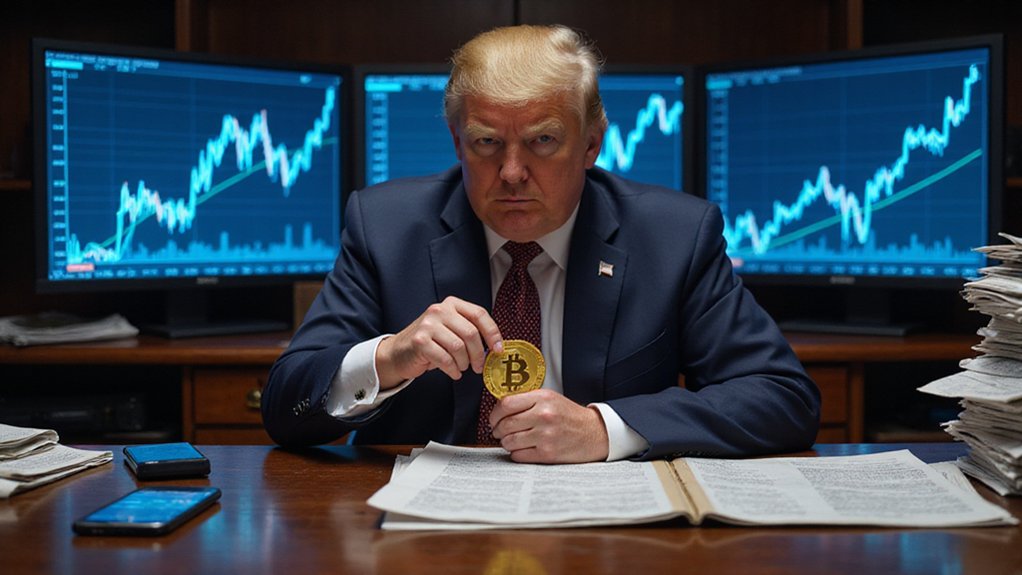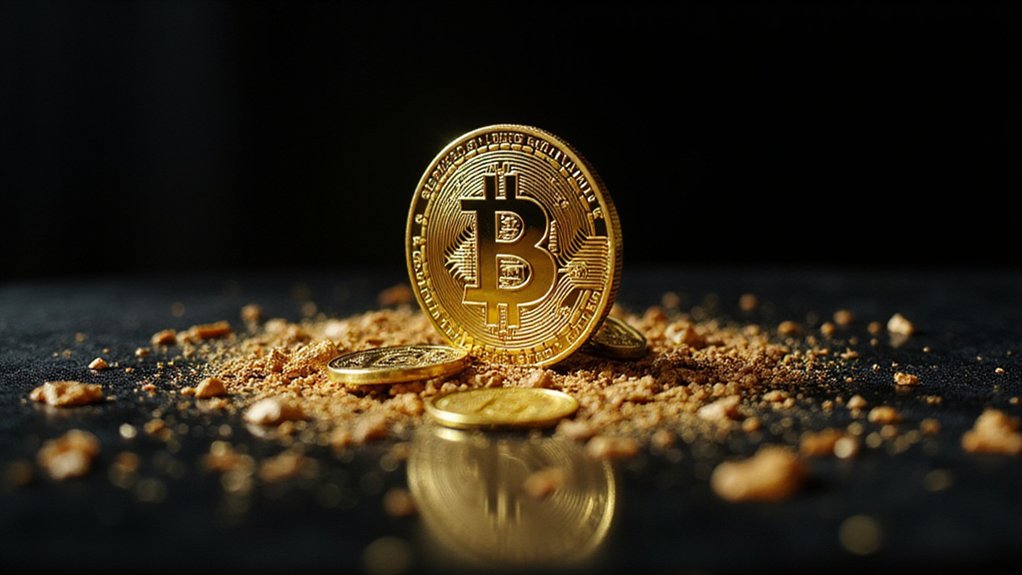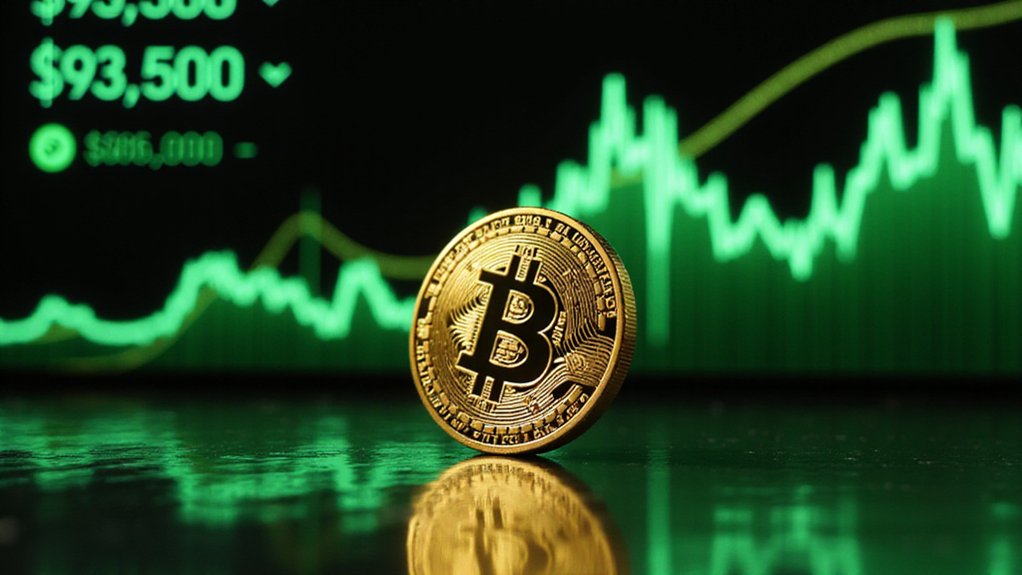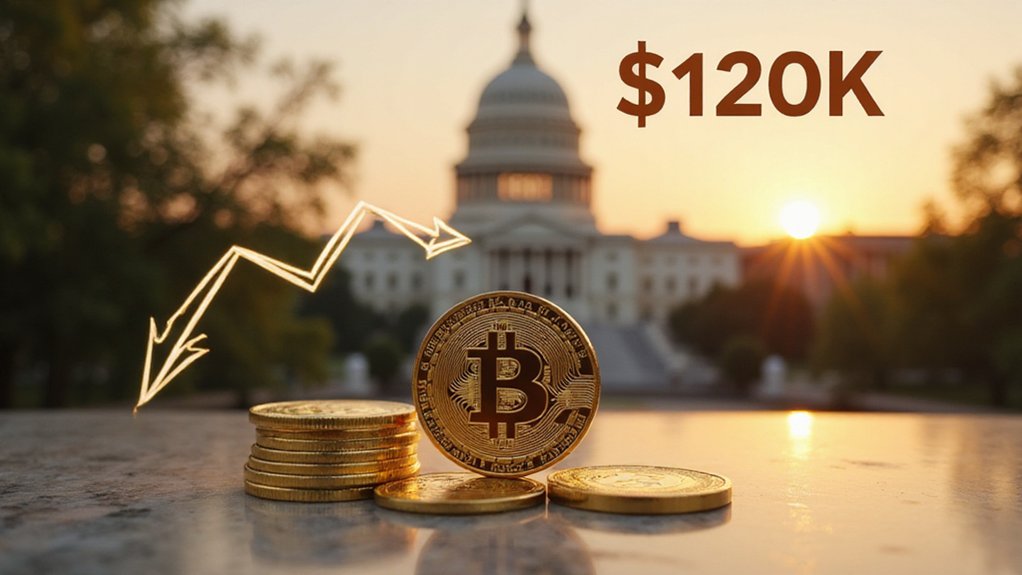Why has Bitcoin transcended its initial reputation as a fringe digital curiosity to become the object of an intense global accumulation race?
The transformation—remarkable by any financial metric—appears driven by a convergence of institutional adoption and evolving perceptions of digital assets as legitimate stores of value.
Bitcoin, now commonly referred to as “digital gold,” has attracted an unprecedented coalition of institutional investors, sovereign wealth funds, and forward-thinking companies who recognize its potential as a strategic asset in an increasingly digitized financial landscape.
Bitcoin’s emergence as “digital gold” signals a paradigm shift as institutional capital recognizes its strategic role in tomorrow’s financial architecture.
This global accumulation frenzy, exemplified by Michael Saylor’s aggressive Bitcoin acquisition strategy at MicroStrategy, reflects growing confidence in cryptocurrency’s role in future financial frameworks.
The price surge—itself a function of tightening supply meeting escalating demand—has only accelerated as major financial players enter the space, validating what early adopters have long maintained: Bitcoin’s scarcity model creates inherent value in a world of limitless fiat expansion.
The regulatory environment, historically ambiguous and often hostile, appears to be evolving toward clarity.
Proposed regulatory overhauls aim to simplify compliance frameworks while educational initiatives seek to guarantee Bitcoin literacy becomes a fundamental component of financial education.
Some nations have even begun incorporating Bitcoin into national fiscal planning—a development unimaginable a mere decade ago.
Mining operations, once the domain of tech enthusiasts with spare computing power, have evolved into sophisticated institutional enterprises.
American Bitcoin, among others, has developed strategies to mine Bitcoin at costs substantially below market prices, creating competitive advantages in the accumulation race. At the Consensus 2025 event in Toronto, Eric Trump highlighted that his company is mining bitcoin at one-third the cost using America’s lowest-cost energy sources.
The fundamental mining process involves a Proof-of-Work mechanism where specialized ASIC hardware competes to validate transactions by solving complex mathematical puzzles every ten minutes.
The Trump family has actively promoted a national Bitcoin strategy that includes reserve planning and positions the cryptocurrency as a symbol of freedom in the modern financial landscape.
These efficient mining technologies may ultimately determine which entities emerge as dominant players in the crypto ecosystem.
The integration of Bitcoin into global financial systems continues apace, with institutions developing increasingly sophisticated vehicles for exposure to digital assets.
What remains remarkable isn’t merely Bitcoin’s price appreciation, but its transformation from speculative instrument to strategic necessity¹—a shift that suggests we’ve only begun to witness the restructuring of global financial architecture around decentralized digital assets.
¹A necessity increasingly acknowledged across political and institutional divides.









